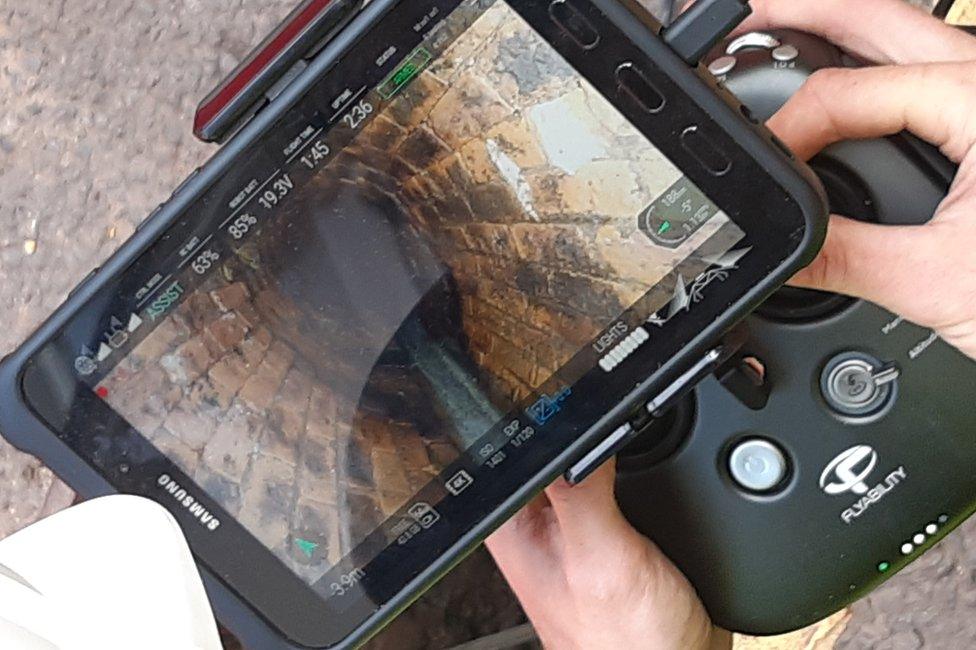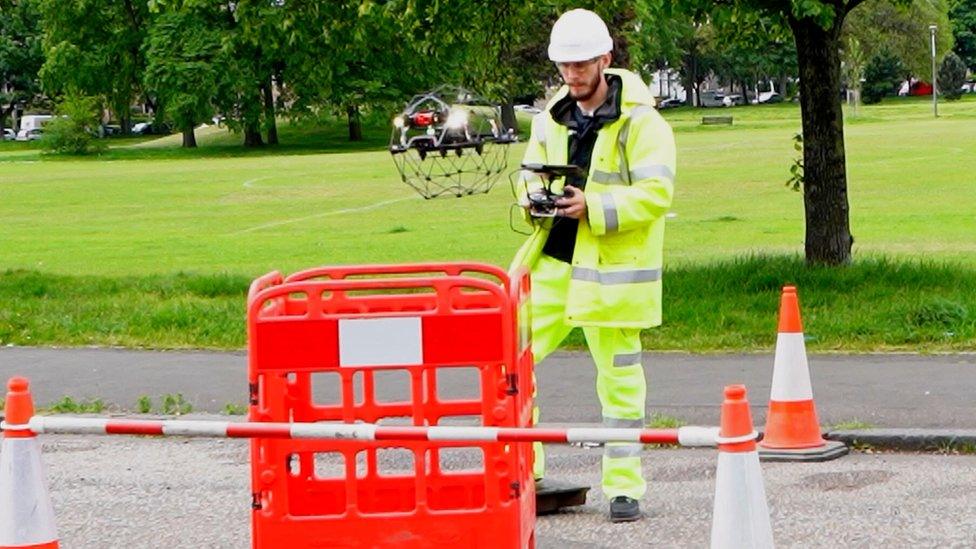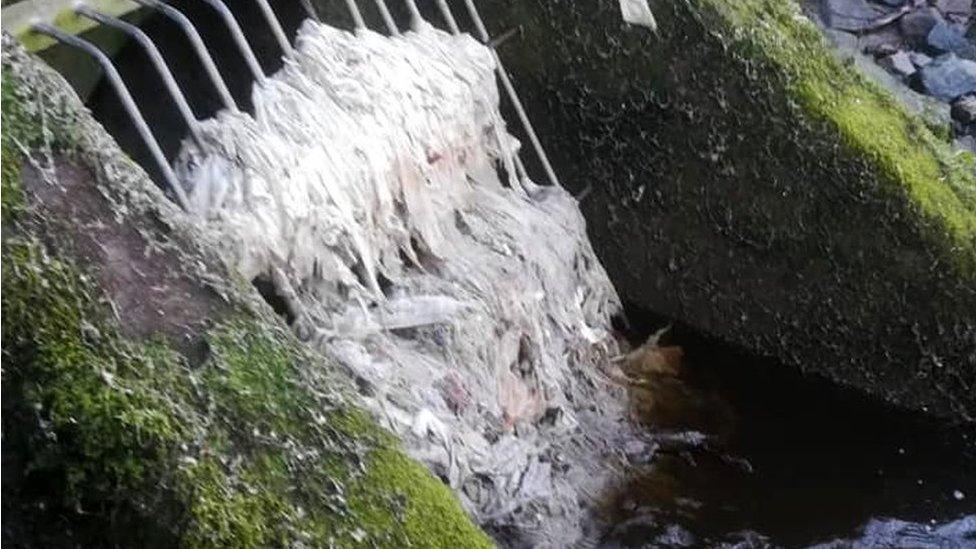Drone technology used to inspect Scotland's sewers
- Published
How drones are replacing people in Scotland's sewers
Scottish Water is pioneering the use of drones to inspect Scotland's sewers.
The utility company said the technology replaces the need for workers to carry out inspections, will provide more accurate readings about conditions and will help reduce emissions.
It carried out the UK's first drone inspection at a sewer on Bath Street, Glasgow in July.
Similar inspections are expected to be rolled out in Glasgow, Edinburgh, Aberdeen and some rural areas.
Scottish Water said the more accurate inspections will cut the cost of repairs and maintenance and reduce the risk of flooding and pollution.
The high-tech drones are fitted with cameras and laser technology called light detection and ranging (LiDAR), which scans sewers for issues like cracks, holes, partial collapses, infiltration, and root ingress.
Two workers pilot a drone as it flies along pipes and can inspect the area using video.

Workers monitor the condition of the sewers by video
This method replaces 15 workers who would have traditionally carried out inspections - though this method will still be used in other parts of the network.
Scottish Water said the drones help cut down on staff working in dangerous conditions in confined spaces with the risk of hazardous gases.
It added that the technology would not adversely affect jobs, pay or conditions of any workers involved.
A spokesperson added: "It will actually create more work because, as we roll it out, we'll be able to carry out more sewer inspections on parts of our waste water network that we could not reach using the traditional 'worker entry' methods. Sewer inspections are also just one part of these workers' job remits."

It takes two workers to operate the technology
The technology including its software was developed by Environmental Techniques, a surveyor based in Northern Ireland.
Scottish Water said the drones would be flown to parts of its 33,000-mile network that traditional surveys could not reach.
It added this method could reduce carbon emissions from sewer surveys by as much as 80% by reducing the number of site vans and vehicle deliveries.
Iain Jones, the company's risk and life cycle planning manager, said: "Drones have been put into sewers elsewhere with limited capabilities and limited success. But the specific adaptation of both drone and the 3D LiDAR modelling is what makes this special.
"The 4K quality outputs combined with accurate modelling is the innovative thing. That quality is four times better than a HD TV and it's certainly a first in Britain.
"Some of the sewers pre-date the Victorian era and are more than 160 years-old and we need information to enable us to make good decisions about how to rehabilitate them if necessary."
- Published3 August 2021
